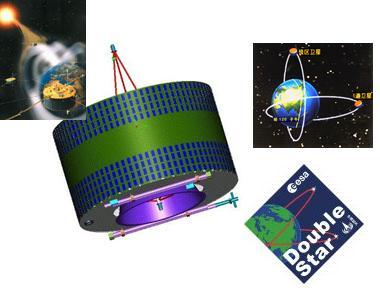
The first of two satellites is launched into orbit
China and the European Union have launched a space mission to study the Earth's magnetic field. The mission - Double Star - in which two satellites will be involved is the first joint mission between China and the European Space Agency.
The first satellite was launched in the early hours of Tuesday (30/12/03) on a 2C/SM long-range rocket from a launch base near the city of Xichang in southwest China. The second satellite will be launched in about six months.
A Chinese-European mission to study the magnetosphere is scheduled for launch on Monday
27/12/03
On December 29, at 20:06 Israel time, the Chinese National Space Agency (CNSA) will launch the first of two scientific satellites in the "Double Star" project. The European Space Agency (ESA) is committed to the Double Star project by providing eight scientific instruments on board the spacecraft.
Double Star follows the European Space Agency's Cluster mission and will closely investigate the interrelationships between the "solar wind" and the Earth's magnetic field. In 1997, the Chinese agency invited the European Space Agency to participate in the Double Star project - a task in which two satellites will be dedicated to the study of the magnetic field from a perspective different from that of the cluster, but complementary to it.
Cluster and Double Star will coordinate the research and help to gain a better understanding of the processes taking place just above the Earth. Some of these phenomena are visually spectacular, such as the aurora borealis, but others, such as magnetic storms, have serious effects on human activities - from power outages to damage to satellites and the communication system.
The position and orbits of the two Double Star satellites were carefully chosen to enable a study of the Earth's magnetosphere on a larger scale than a cluster satellite could do alone. A typical example of how the two missions can work together is to study the magnetic substorms that create the aurora borealis. Double Star and Cluster will together be able to answer fundamental questions that these substorms create.
Cluster satellites are in a high orbit - about a third of the distance to the moon, a place where the mechanisms that cause these storms are supposed to start their operation. The satellites are very close to each other - only a few hundred kilometers separate them and this allows us to observe small areas in great detail. However, some of the Danes claim that these galaxies may start closer to the Earth, and therefore the Double Star satellites will be placed in a lower orbit.
The four cluster satellites cross into and out of the magnetosphere and observe areas where the Golmin's connections with the solar wind are particularly important, such as in the polar cups and the magnetic "tail" (magnetotail). The polar cups are funnels that open in the magnetosphere at the poles, and are the "doors" through which the electrically charged particles from the solar wind enter the Earth's upper atmosphere. The magnetic tail is the part of the magnetosphere that is pushed towards the solar wind - it is shaped like a current and it melts at least 2 million kilometers into the night side of the Earth. These areas are difficult to research and there is still a lot of mystery in them, but Double Star and Cluster will eventually help us understand more about these phenomena.
